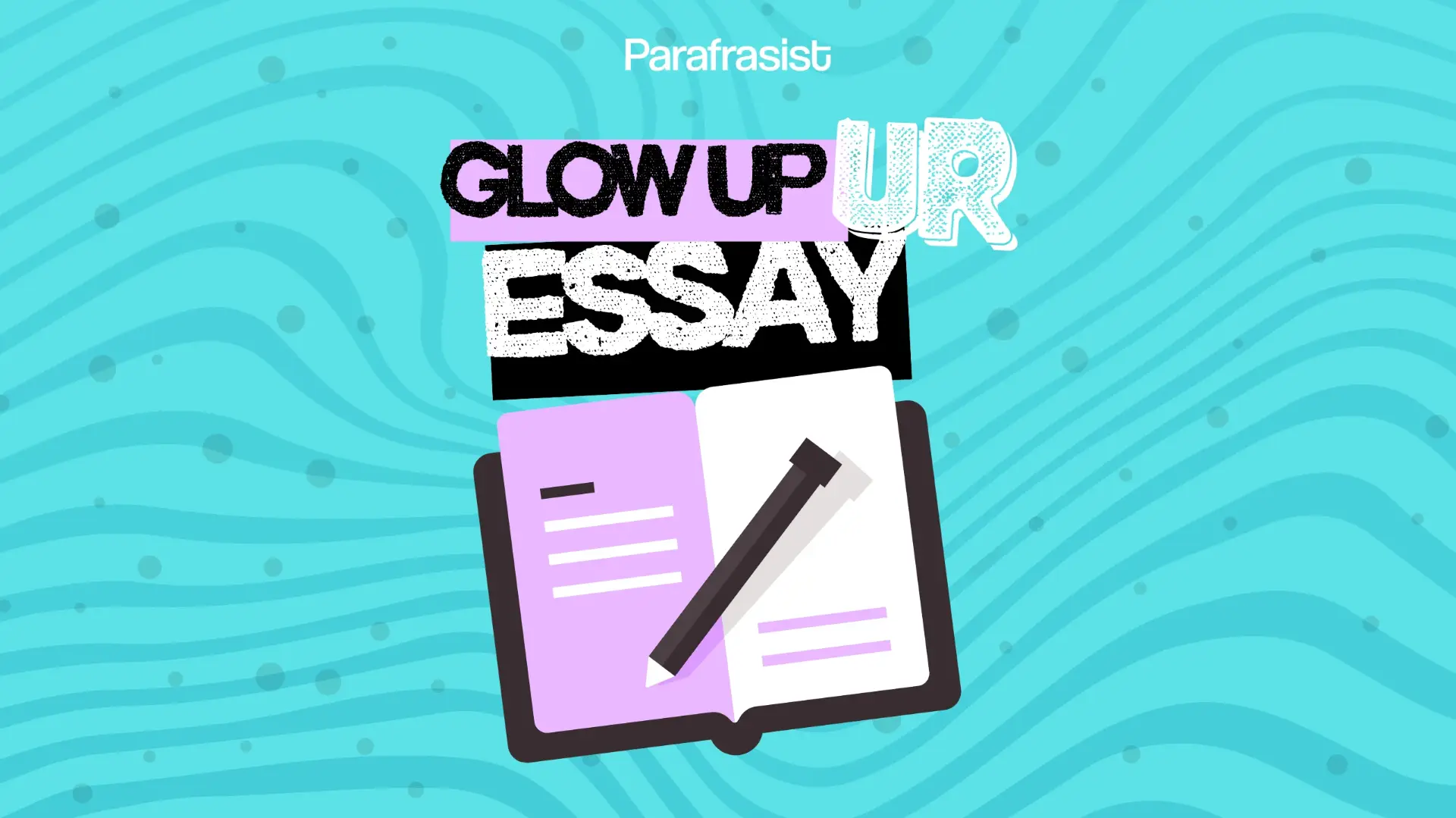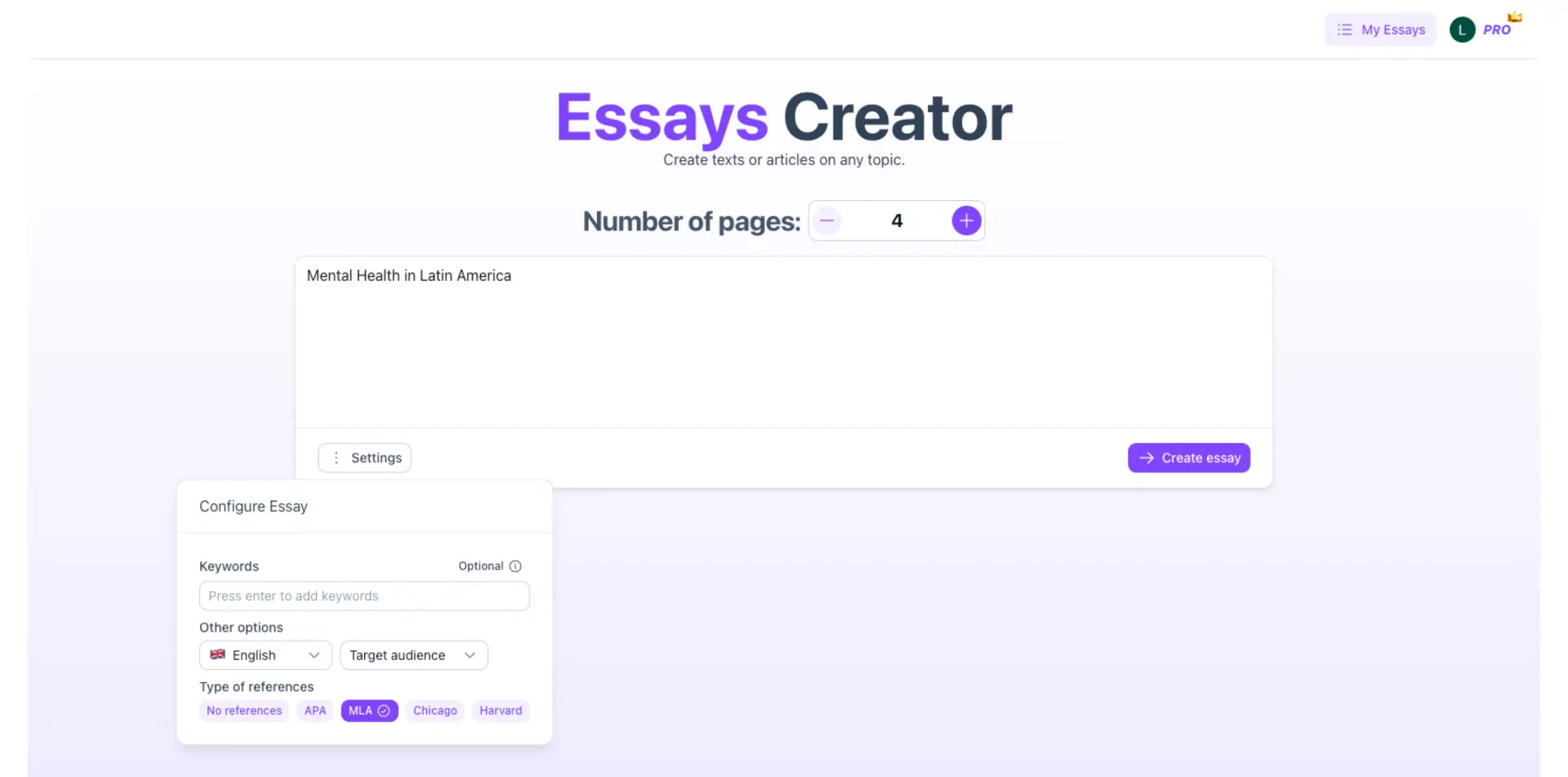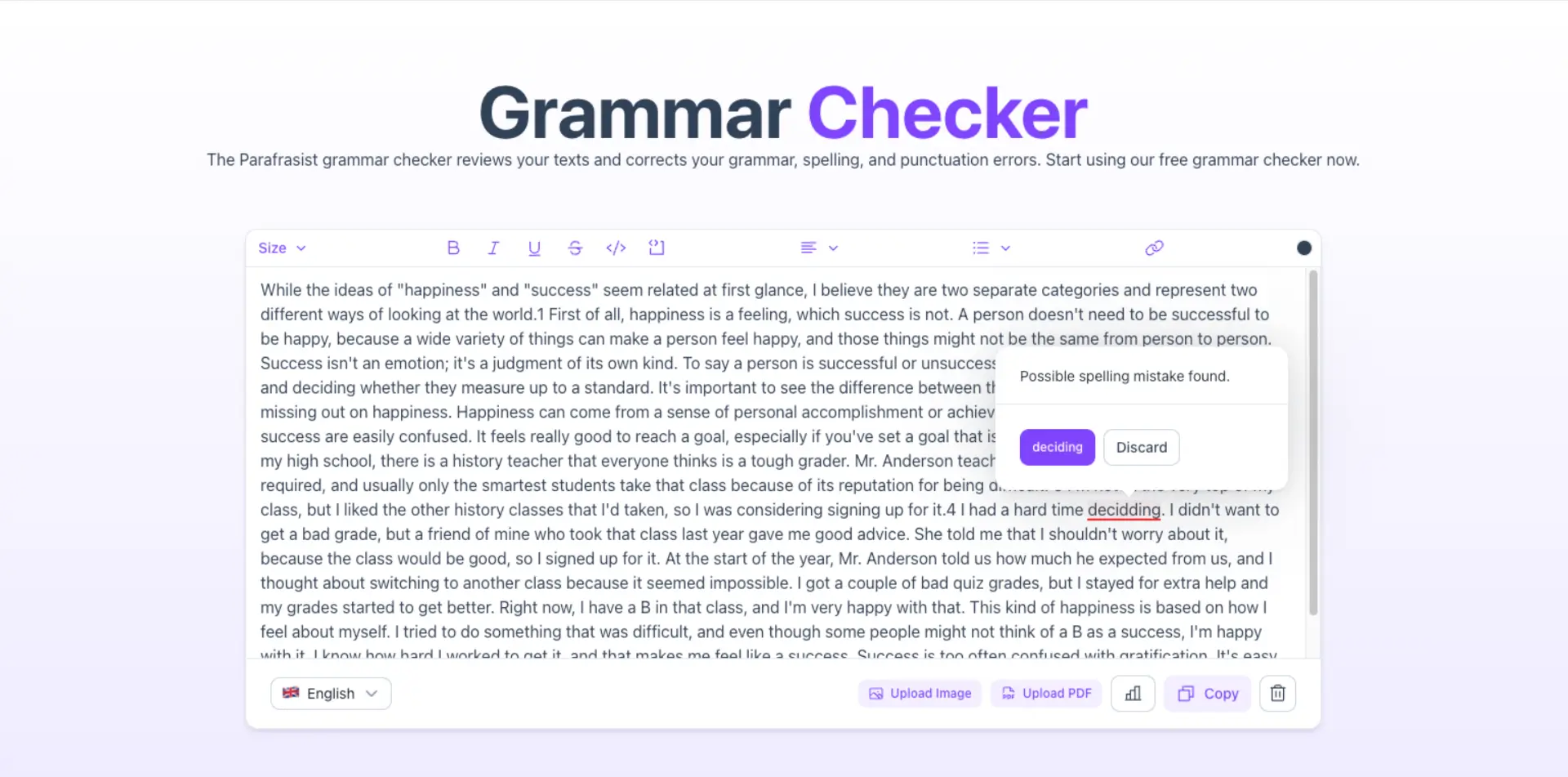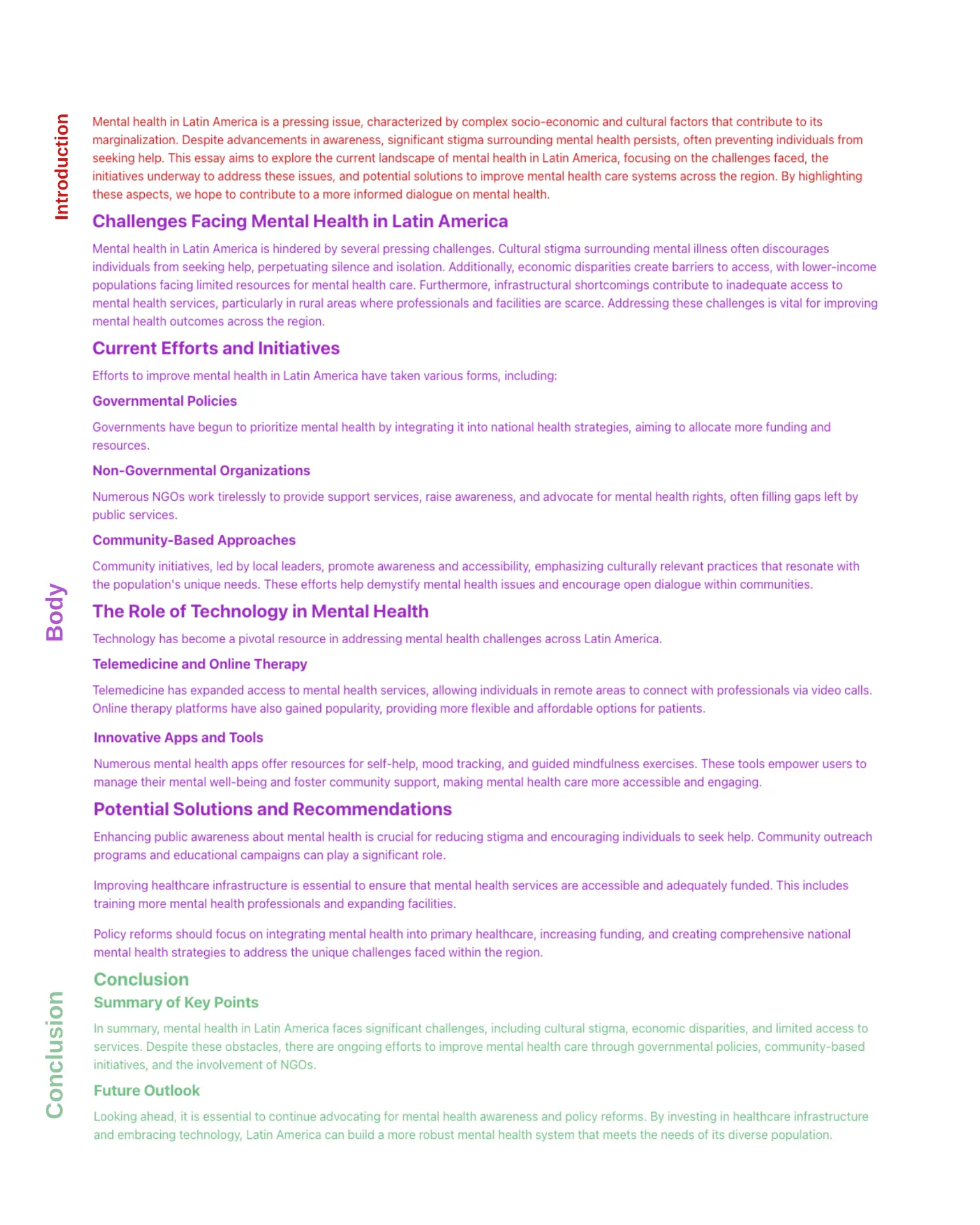How to Write an Essay – Definition, Steps, and Example
Victoria | Equipo de redacción
August 5, 2025

Have you ever heard the word “essay”? If you’re a student, we bet you have, and probably it has been the reason for a few sleepless nights and headaches. Teachers usually assign essays to evaluate our ability to develop ideas or opinions, but writing one can feel like a tough and exhausting task if you don’t know where to start or if you don’t have much experience tapping into your creative side. That’s why in this guide, we’ll explain step by step how to start and what you need to keep in mind.
What Is an Essay?
An essay is a prose text where you share ideas, arguments, opinions, or reviews about a specific topic. Its goal is for the writer to present personal interpretations backed by valid and reliable information. Something super important: an essay does not dive too deeply into the research itself; the information is mainly there to support your ideas.
Usually, essays are about 2 to 10 pages long, depending on the topic and your academic level.
It’s one of the most common forms of writing in school because it combines research skills with your ability to express opinions. Essays are super useful to demonstrate knowledge and presentation skills.

Essay: How to Write One?
Maybe the definition scared you a bit, and now you’re wondering if there’s a way to make this task easier. The truth is, writing an essay isn’t simple, but breaking it down into steps will make things way more manageable. Some of these steps even start before writing, and they’re game-changers:
1. Choose Your Topic
Most of the time, teachers assign the essay topic. When that happens, it’s easy to feel disconnected because it’s “something we have to do.” But try to link the topic to something that interests or motivates you. This will not only make the process smoother, but it will also give you a unique perspective.
If you get to choose your topic, pick something you enjoy or already know a bit about. Always ask yourself:
Why do I want to write about this topic?
How much information can I find about it?
Is it relevant or well-known?
2. Research
This is a key step for writing a solid essay. Look for information in multiple sources and formats—magazines, articles, books, or even videos. Focus not just on quantity, but on quality: your sources should come from credible experts or leaders in the field.
If research isn’t your thing, here’s a lifesaver: Parafrasist’s Essay Creator gathers the best info from reliable sources into a single document. Just type your topic (general or specific), select the word count and citation style, and boom—you’ll get organized information ready to use.
This tool saves time, reduces stress, and gives you multiple perspectives you might not find on your own.

3. Brainstorm Ideas
Thanks to your research, you can now form a clearer opinion. Before writing, jot down everything in your head about the topic. Write questions, notes, or even critiques of the authors you read.
4. Develop Your Point of View
After brainstorming, pick 3 or 4 main ideas that will guide your essay. Decide on your thesis or main argument—this will be your essay’s backbone.
Imagine your essay as a debate: your thesis is your stance, and the ideas you select are the points you’ll defend (or oppose).
5. Write a Draft
A draft lets you throw all your ideas on paper without worrying if they sound messy. Here, mistakes are welcome! Write freely, and later you’ll analyze which ideas repeat, which connect best, and how to form a clear structure. Try organizing your draft like this:
Main topic
Subtopic
Key details
Additional details
6. Review the Structure
Look at your draft and see where one idea ends and another begins. The basic structure of any essay is introduction, body, and conclusion. Later, we’ll go deeper into this structure.
7. Write the Final Essay
Now comes the fun part! With your draft in hand, start writing a polished version with clear, connected paragraphs. By now, your ideas will flow much faster, and you’ll feel confident defending your argument.
Make sure each paragraph connects smoothly, and check your grammar carefully. For a quicker review, paste your essay into an online grammar checker to spot and fix mistakes.

Types of Essays
Choosing the right type of essay will shape how you present your ideas. Here are some of the most common ones:
Literary essay: Offers creative freedom and often uses metaphors and subjective opinions.
Philosophical essay: Focuses on reflections and personal views on philosophy-related topics.
Scientific essay: Shares opinions on a scientific topic backed by experiments, theories, or hypotheses.
Biographical essay: Tells the story of a person’s life, works, or a key event.
Argumentative essay: Aims to prove your viewpoint is valid and persuade the reader.
Historical essay: Explores a historical event or period instead of a single person.
Analytical essay: Dives deeply into a topic, breaking it into parts to explain their connections.
Critical essay: Describes and critiques an event, theory, or work, offering an informed judgment.
Expository essay: Explains a topic in a clear, educational way with minimal opinions.
Sociological essay: Discusses society, social issues, or cultural topics.
Descriptive essay: Paints a vivid picture of a topic, often from the author’s unique perspective.

Essay Structure
All essays should follow the same basic structure for clarity and flow: introduction, body, conclusion.
Introduction (10%): Grab the reader’s attention and provide brief context.
Body (80%): Present your thesis, arguments, and supporting evidence. Use separate paragraphs for each idea and add transitions between them.
Conclusion (10%): Summarize your points and leave a final thought that persuades or invites reflection.
Essay in APA Format
If your teacher asks for APA style, don’t worry—it only affects the format, not your content. APA essays usually include:
Title page (essay title, student name, teacher, school, course, city, year)
Abstract (150–200 words, short summary of the essay)
Introduction
Body
Conclusion
References (all sources cited in your essay)
Need help with citations? Check our blog on How to Cite in APA Format.
Essay Example
Still unsure how your essay should look? Here’s a small example created with a free Essay Creator:

Writing a great essay doesn’t have to be hard if you follow these steps each time. Practice really does make perfect—the more essays you write, the better you’ll get. Start by dedicating time to research, enrich your vocabulary with new expressions, and always question your own ideas. It won’t always be easy, but with tools like Parafrasist’s Essay Creator and Spell Checker, you can save time and keep improving your writing skills.
And if you need a sign to start your essay… this is it!
Good luck!